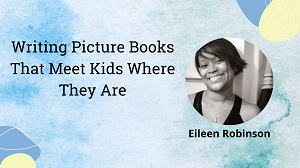When I talked to a group of young readers recently, I asked them “What makes a story powerful to you?” Well, when you’re talking to 5-to-7-year-olds, this really isn’t the right question!
So, I then asked “What’s your favorite story and why do you like it?” In talking about their favorites, many pointed out the things a particular character did. Then I asked, “Would you read this book again and why?” Many said yes, along with answers like:
“She makes me feel pretty.”
“His costume made him feel strong.”
“I have a brother like that.”
But the one that stayed with me was: “I feel that way, too.”
In their own way, these children are having emotional responses to the story. They are connecting with the characters on the page. This also shows the ability of the author to convey something that feels real to the reader, rings true to their experience, shows them they are not alone, and/or gives them a new experience–meeting them where they are, in their lives, at that moment.
No matter where your story is set, on earth or in space, or if the characters imagine themselves to be superheroes or just a neighbor next door, your readers want to feel that underneath it all, these characters are everyday people just like them.
Remember, the way they enter your story is not the way they should come out, and that transformation can only be accomplished through connection–by eliciting emotion.







